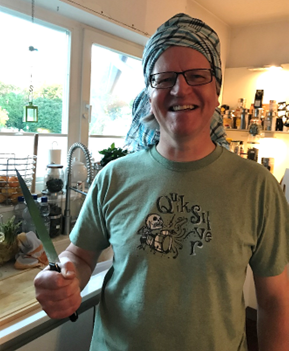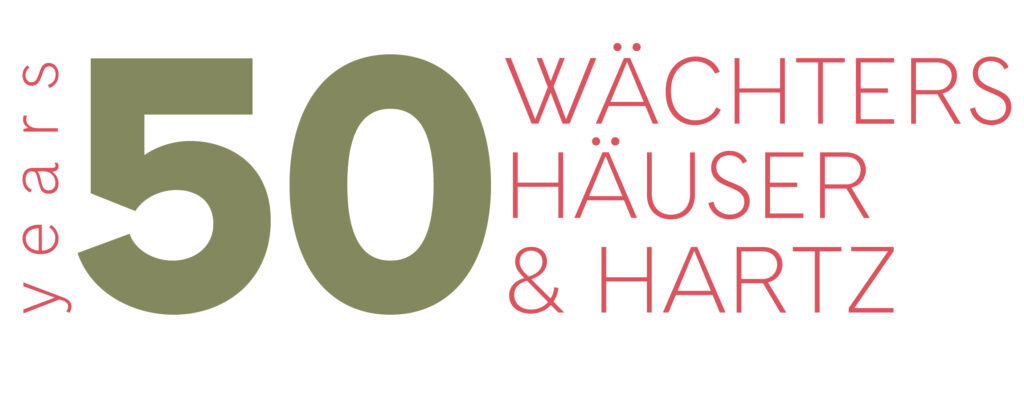December 21, 2022, updated on December 22 and 23, 2022
… a different holiday post.
Started in February 2020, the SAJO blog is providing a thread through the pandemic with up-to-date information to present pandemics and infectious diseases.
Note: The series “Lessons learnt from the COVID-19 pandemic” will be continued soon.
You may zoom in and out using CTRL+ and CTRL-
Dear readers,
This is going to be a somewhat different holiday-post.
After three years the pandemic circumstances are well known to everybody.
Meanwhile, we know the virus. The best protection from disease is the vaccination, and to test oneself before an event. Otherwise, all persons attending would have to wear an N95 mask; but who would like to do so when meeting friends or family? In Germany, testing centers are charging € 10 per test. This still is way too much, indeed, but it is courteous, not to show up untested at an event. In times of a pandemic of a contagious pathogen, this should be part of personal hygiene, a matter of course.
Traditionally, in Germany Christmas is starting in the evening of December 24th (the Holy Night), usually with a light meal, followed by an exchange of presents. On December 25, Christmas Day, family and/or friends are gathering for a feast. We do the same. For several years now, we are elaborating our cooking skills with a Christmas goose. The recipe is being put together from many different sources: great-grandparents, award-winning chefs, cookbooks, our own tinkering… over the years now.
Today, we want to share our current recipe. This does not make for a food blog, though.
Our Christmas Goose makes a lot of work but is worth it. Time needed: 5 to 6 hours, incl. preparation. You’ll spend the day in the kitchen cooking.
In Germany, a goose is considered a feast. The meat has a unique taste. With the right preparation it is a delicacy, juicy but not greasy, as it used to be in the early days, something special. Special for the whole family and the festive christmas dinner.
Here, we describe our recipe for the Christmas Goose and the side dishes. Traditional side dishes are potato dumplings, red cabbage, creamy savoy cabbage and warm knob celery salad. The innards of the goose (heart, stomach) and the neck will be prepared and served as appetizer, or as finger food the next day. The rendered goose fat will be bottled for further dishes over the year. Recipes are as follows:
Ingredients for the goose, the stuffings, and gravy
1 cleaned and disemboweled goose (3,5 – 5 kg / 7 – 10 lb) with the neck and innards aside, salt, pepper, butter. The innards come with the disemboweled goose inside the abdominal cavity.
Stuffing #1 for the goose, abdominal cavity : 1 package chestnuts cooked and vacuum-packed, 1 orange, 2 apples, 1 handful of raisins or sultanas, 1 handful of dried apricots and/ or plums, 1 handful of almonds, 1 package dried mugwort, 2 stems of lemon grass (or 1 organic lemon, sliced), 1 handful of chopped parsley, 2 large slices of wheat bread diced, 5 bay leaves, 1 onion, (these may of course be varied as you wish, i.e. more bread, more or other herbs, other sorts of dried fruit, let you fantasy play).
Stuffing #2 for the goose, under the neck, chest cavity: 2 Tbs butter, 2 stems of sage.
For the gravy: Goose neck and innards (stomach, heart, but NOT the liver), 5 bay leaves, 2 twigs of rosemary, 2 carrots roughly chopped, 5 garlic cloves in halves, 2 celery stalks roughly cut or a piece of knob celery, 1 leek roughly cut, 1 onion in quarters, 1 handful of dried plums (plus some apricots if wanted), ½ to 1 quart of chicken broth or water; after the volume reduction: Juice of 2 oranges, maybe 1 Tbs butter, and 1 shot of sherry or red or portwine to finish.
For the appetizer: Goose parts retrieved from the sauce, goose liver, 1 small onion, 1 garlic clove, thyme, salt, pepper, 1 slice of wheat bread
Glaze (optional) for the goose (by Johann Lafer): In a tiny pot, melt 2 Tbs butter; add 1 Tbs honey, and 3 Tbs soy sauce and boil until syrupy.
Notes:
Kitchen utensils that had been used for raw or undercooked poultry, must be used for poultry exclusively. Afterwards, it needs a good cleaning with detergent and hot water. Clean your hands accordingly too.
Amounts are approximations, use to your liking. A goose can take quite some salt. We use coarse sea salt.
In general, vegetables and alle ingredients need to be cleaned accordingly.
We mostly use organic vegetables and fruits, and organic poultry. The taste is much more intense, the quality is better. It fits to our mindset. The keeping of animals and animal welfare to us is important.
Directions for the goose and gravy (time needed about 6 – 8 hours)
A) Preparation of the goose and fat rendering:
Set the oven to 100 °C / 210 °F with a tray in the bottom rack. Pour water into the tray and put a wire rack into the rack above.
Rinse the goose with cold water and remove and discard the tail and rump. Cut off the visible fat and put it aside in a pot. Later, this may be rendered slowly to get some goose lard for future cooking.
Using a sharp knife, pierce the skin in the thighs’ crooks (as an opening for the fat to render).
Lay the goose breast-side down onto the wire rack. Render the fat at 100 °C / 210 °F (top/bottom heat, NO convection!) for 40 – 50 minutes over the water vapor. The fat will render into the water.
B) Preparation for stuffing #1 and #2 for the goose
In the meantime, prepare stuffing #1 for the abdominal cavity: chop all ingredients (as available) to the desired size and mix well in a large bowl. The stuffing should be sweet and sour, and capable of absorbing the fat.
There is a second stuffing (for the neck region): combine butter and sage.
Let the goose cool down until safe to touch. Salt and pepper inside and out. Stuff the goose and close the openings using skewers and twine (stuffing #1 in the abdominal cavity, stuffing #2 below the neck). Rub the goose with butter and sprinkle with salt and pepper (don’t forget the wings!); finally, tie the legs together.
Empty the rack with water/fat, set the oven to 140 °C / 285 °F top/bottom heat (NO convection).
C) Preparation of the gravy and the goose
Preparation of the gravy foundation: Fill the emptied rack with the goose neck, heart, and stomach, carrots, celery, garlic, bay leaves, rosemary, leek, onion, dried plums (they give the gravy a wonderfull dark colour), and broth/water. Put the rack back in place, place the goose breast side up onto the wire rack, and roast for at least 4 – 5 hours (the longer the better) over the rack with the gravy foundation. Once in a while, pour some sauce over the goose. (Hint: The higher the heat the tougher and dryer the meat gets, therefore we prefer low temperature at 140 °C / 285 °F top/bottom heat (NO convection) to get the meat juicy and tender.)

While the goose is cooking for 4 – 5 hours, the side dishes need to be prepared (see recipes below). The knob celery salad can be prepared the day before.
As soon as the goose is cooked, it is divided and kept warm covered with aluminum foil on a plate or Dutch oven lid, in the oven at 100 °C / 210 °F until the gravy is finished.
When is the goose ready? You may see that it starts falling apart. The meat juices are running clear and not cloudy. Taste the neck while you carve it. It is delicious. What to do with the stuffing? The stuffing may be discarded since it is too greasy. Alternatively you may bake and serve it as a side dish.
All the solids are removed from the bottom rack. The neck with its especially tender meet is best gnawed off immediately. The goose innards are put aside, the vegetables/herbs are discarded.
The gravy foundation is transfered from the tray into a large enough pot. We are separating the fat from the liquid using a special can with a long spout, and keep the lard in a glass in the fridge for future use. The lard is infused with all the spices and thus very aromatic.
Preparation of the gravy (by Michel Roth): The pot with the sauce foundation is brougth to a boil over high heat to reduce the volume. This may take up to 30 minutes depending on the volume to begin with. The reduction is done when the gravy shows large bubbles. Now orange juice, butter and sherry are added while constantly stiring. The gravy is done once it shows a glow. Now it is time to taste. The goose is served on top of gravy. More gravy is served in a gravy boat at the table.
Unter Rühren Orangensaft, Butter und Sherry o.ä. zugeben. Die Sauce ist fertig, wenn sie einen Glanz bekommt. Vor dem Servieren abschmecken. Gänsestücke werden auf einem Saucenspiegel serviert. Mehr Sauce wird in einer Sauciere bei Tisch gereicht.
Right before serving: Remove the goose from the oven. Set up the oven grill to 240 °C / 460 °F.
Optional: Brush the skin with a glaze (in a tiny pot, melt 2 Tbs butter; add 1 Tbs honey, and 3 Tbs soy sauce and boil until syrupy.)
Put the goose on the wire rack in the middle position and grill until the skin is crisp. Attention: this will take very little time, so stay close! All done.

D) Preparation of the appetizer with goose innards
While the broth is thickening, the appetizer can be made. Hint: You may push the appetizer to the next day. The already cooked innards and the liver will be stored in the fridge.
Clean the liver and broil in a non-stick pan with some oil from both sides for 1-2 minutes and set aside. Toast the bread. Dice the onion, thinly slice the garlic and roast both in the used pan until translucent. Now chop the liver, heart and stomach into small dice. Mix all ingredients with some thyme, salt, and pepper and quickly heat in the pan (stirring). Pour the pan’s content onto the toasted bread and divide evenly.
Perfect companions for a goose would be Frankonian potato dumplings, red cabbage, creamy savoy cabbage, as well as a lukewarm salad of knob celery.
Red cabbage (2.5 – 3 hours):
Ingredients: 1 red cabbage head, 4 small onions, 1 apple, 3 bay leaves, 3 cloves, 1 Tbs. juniper berries, 2 pcs. star anise, 1 cm (0.4 inch) stick cinnamon, 50 ml (1/4 cup) balsamic vinegar, 150 ml (2/3 cup) vinegar, 200 ml (1 cup) vegetable broth, 1 L (1 quart) red wine, 1 Tbs sugar, 2 Tsp salt, 4 Tbs goose or duck lard
Directions: Thinly slice the cabbage, dice the onions, peel, pit, and thinly slice the apple
In a large pot, melt the lard, add onions and roast over medium heat until translucent
Add bay leaves, cloves, juniper berries, star anise, and cinnamon and roast for another 2 minutes
Add cabbage and stir well
Heat for 10 minutes while constantly stirring
Stir in apple, salt, and sugar
Add balsamic vinegar, vinegar, broth, and wine
Stir well and bring to a boil
Reduce heat, cover, and let simmer for at least 2 hours (stir occasionally)
After 2 hours, check the cabbage and the liquid level. When necessary, add some broth
Once finished, add vinegar and salt to taste, and let steep at low heat until the main course is ready.
Homemede potato dumplings (about 1.5 hours):
Ingredients: 1 – 2 kg (2 – 4 lb) floury boiling potatoes, salt, nutmeg, 1 slice of white bread for the croutons, maybe 2 egg yolks.
Directions: A mixture of one part cooked floury potatoes, peeled, and mashed with some salt and nutmeg, and 2 parts of raw peeled, ground, and juiced floury potatoes, is formed to small balls (with a crouton inside) and put into almost boiling water. Sabine’s great grandmother’s trick: Wet your hands with cold water before forming the dumplings. Another trick: Use a juice extractor to squeeze the raw potatoes. The dough needs to be dry.
Note: Raw potatoes darken when exposed to air. To avoid this discoloring pealed potatoes are kept under cold water. The raw dough may be treated either with a sulfur containing “Knödelhilfe” (brand name, so called “dumpling helper”) or sprinkled with some lemon juice or vinegar, that is being stirred into the dough. All three are slowing down the oxidation process.
Let steep below boiling point for 20 minutes.
Should you not have the time to do that, you may use a ready-to use potato dumpling dough with 2 egg yolks and some nutmeg added instead.

Creamy savoy cabbage (30 minutes):
Ingredients: 1 head of savoy cabbage, 2 tomatoes or some cranberrys, 2 Tbs butter, 1 onion, 2 garlic cloves, corn starch, 100 ml (1/2 cup) chicken or vegetable broth, 100 ml (1/2 cup) cream, salt, pepper, nutmeg.
Directions: Dice the tomatoes, clean, and rinse the cabbage. Blanch the leaves in boiling water for 30 seconds, put into ice cold water, and drain. Remove hard stem, cut the leaves into strips.
Peel and dice onion and garlic, and roast in a pan with some oil until translucent, dust with some starch, pour in broth and cream.
Add cabbage and tomatoes, and season with salt, pepper, and nutmeg. Tomatoes may be replaced or complemented with a few chopped cranberries.
Cover and let simmer over low heat for 10 minutes.
Salad of knob celery according to Sabine’s great grandmother and Joerg (takes around 2 hours).
The goose is a rich meat. Celery (as well as mugwort in the stuffing) helps with digestion.
Ingredients: 1 knob celery, aluminium foil, apple vinegar, 1 onion, salt, pepper, caraway, anise, fennel seed, maybe selery seet, mortar, neutral oil.

Directions: A knob celery is peeled and cut into 2 cm (0.8 inch) slices. The slices are wrapped in aluminum foil and put into the oven at 200 °C (390 °F) for 1 -1.5 hours. The slices are cut across into very thin slices. In a bowl, the slices are mixed with some apple vinegar and a little water. Add the thinly diced onion, salt, and pepper; use a mortar to pestle some caraway, anise, and fennel (plus optional celery) seed, and add to the bowl, mix well. Once the salad is cooled to room temperature, add some neutral oil (sunflower or canola) and mix again. Add salt to taste. Ready to serve.
The next day: Food is stored over night in the cold, preferable in the fridge at 2 – 8 °C / 35 – 46 °F . The goose is very tasty the next day as are the side dishes. Goose parts are reheated over steam (from a rack with water) at 100 °C / 210 °F top/bottom heat (NO convection) for 30 – 50 minutes. The dumplings are stored on a plate in the fridge. To reheat they are put into hot (almost but not quite boiling) water. Let steep below boiling point for 10 – 20 minutes. Red and savoy cabbage are best reheated on the stove, maybe with some additional fluid. The knob celery salad needs some more seasoning (salt, pepper and a shot of vinegar) the next day. Just try to taste.

For a festive christmas dinner, as an aperitif Joerg serves a glass of Crémant and for the main course, the goose, a glass of dry red wine. We love red wine from France, California, South Africa, Australia and some other countries, but also from Bavaria, the Frankonian Domina. As Alternative to red wine there are white wines that fit as well. All wines we recommend are dry but well tasting. However, we also like semi-dry wines and other ones.
Music accompanies a festive dinner, as long as all can agree upon the style, and not every one talks simultaneously, wild and chaotic and sometimes too loud as it happens with extended families. At Christmas we love “Christmas in Vienna” with the three tenors (Placido Domingo, Jose Carreras und Luciano Pavarotti), with Dionne Warwick, and with Diana Ross, the concert with Zubin Mehta at the Caracalla Thermae in Rome, the Beethoven violine concerto, gospels by Mahalia Jackson and Whitney Houston, and Rock Christmas, the first published CDs. This collection is constantly growing. The first CD of the “A Very Special Christmas” series 35 years ago revolutioned the christmas music canon as reported by the Washington Post. Lucky we are that all musicians took part. https://www.washingtonpost.com/arts-entertainment/2022/12/20/very-special-christmas-album-history-1987/
Now, we wish you a festive, quiet, restful, and most of all peaceful holiday season. We are feeling with the people in Ukraine, who have to endure Christmas while at war, surviving icy temperatures, fighting for their lives. May everyone help as good as they can.
Christmas is the celebration of love and peace.
We wish you MERRY CHRISTMAS and a HAPPY NEW YEAR!
Thank you for your loyalty. Have a good transition into the new year, we shall continue to write for you to inform about this and coming pandemics, pathogens, and biology.
One positive piece of news came at the end of this year. The UN Biodiversity Conference ended with an agreement of the participants, to put 30 % of their land and sea areas under protection by 2030, and to do more for the protection of wildlife and biodiversity. We take the politicians by their word. We do hope this will be more than lip service. There is one Earth only. It is our basis of existence. Should biodiversity be reduced any further, it will become impossible for mankind to survive on this planet. All our food, water, air, is coming from nature. Mankind is egotistic. Hence, we hope it will end the mass extinction in its own interest.

Take care and stay safe!
We wish you success with your cooking and festive and happy holidays!
MERRY CHRISTMAS and a HAPPY NEW YEAR!
Yours, Sabine and Joerg

Dr. Sabine Breun and Dr. Joerg Baumann, both PhDs, virologists, immunologists, molecular biologists and founders of SAJO. Both are specialized in infectious diseases. Since the 90s, Dr. Baumann has been working on zoonoses and how pathogens overcome the species barrier. Since 2000, Dr. Breun works on the interaction of viruses with the immune system. Both work as team. SAJO enables new antivirals – antivirals of the next generation to fight pandemics.
During their scientific carreers, both performed scientific work for 5 years at the National Cancer Institute in a US elite program on competitive US scholarships.


SAJO – for a healthy and better future!
SAJO is consulting all around infectious diseases. We are applying our know-how, that we have acquired in more than 20 years. We do what we can to fight this pandemic.


This is post No. 240. To our delight our blog is receiving a lot of acceptance, we love to share our know-how and expertise. Please feel free to share the link – it is an informative tool to fight this pandemic.
(Note: We are no members of political parties, religious congregations, or societies. We value independence, sovereignty, and freedom. With our blog we are providing purely scientific advice, without conflict of interest, altruistic. We are not being paid for it.)

The SAJO high technology (the heart of SAJO) allows for the identification and isolation of next generation antiviral and antibacterial components for the development of new drugs, for prevention or therapy. This is what we do best – these are our USP and our strength.
Looking for a reputable, wise and long-term investment?
Financiers and big investors, who respect democratic values are very welcome to contact us.
#1 Should you like to have SAJO antivirals or antibacterials, or to give a contract, or need consultation, or to invest into SAJO, please do not hesitate to contact us. You may use the formular at our homepage or phone number or email. We are looking forward to talking to you.
#2 On a regular basis we are asked for ideas. For ideas please feel free to contact us as well. You may use the formular at our homepage or phone number or email.
The SAJO business model: https://www.sajo-innovation.de/sajo-Flyer.pdf
Visit Sabine at XING https://www.xing.com/profile/Sabine_Breun and Jörg at LinkedIn https://de.linkedin.com/in/j%C3%B6rg-baumann-phd-0710b11a3


